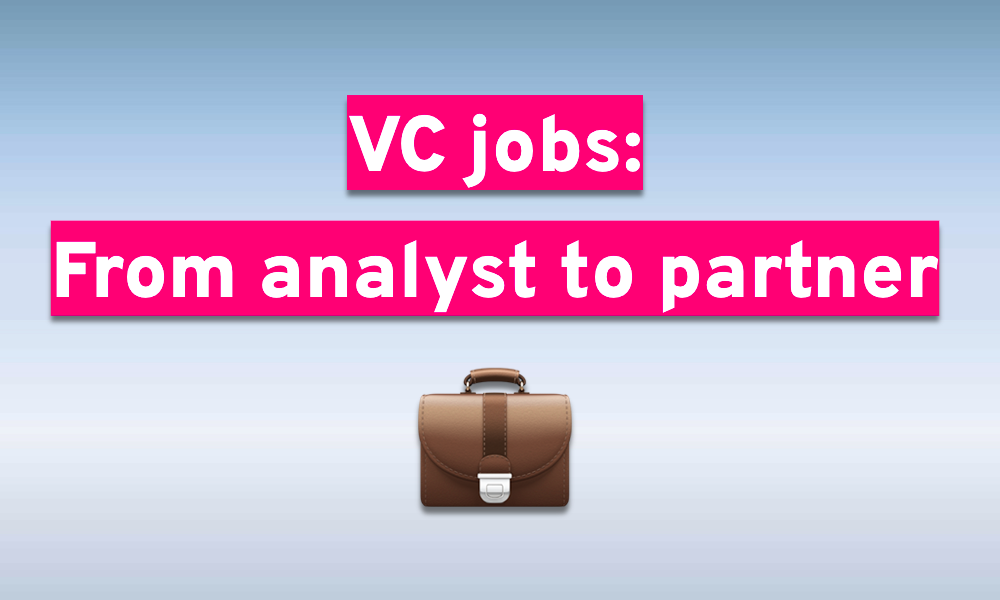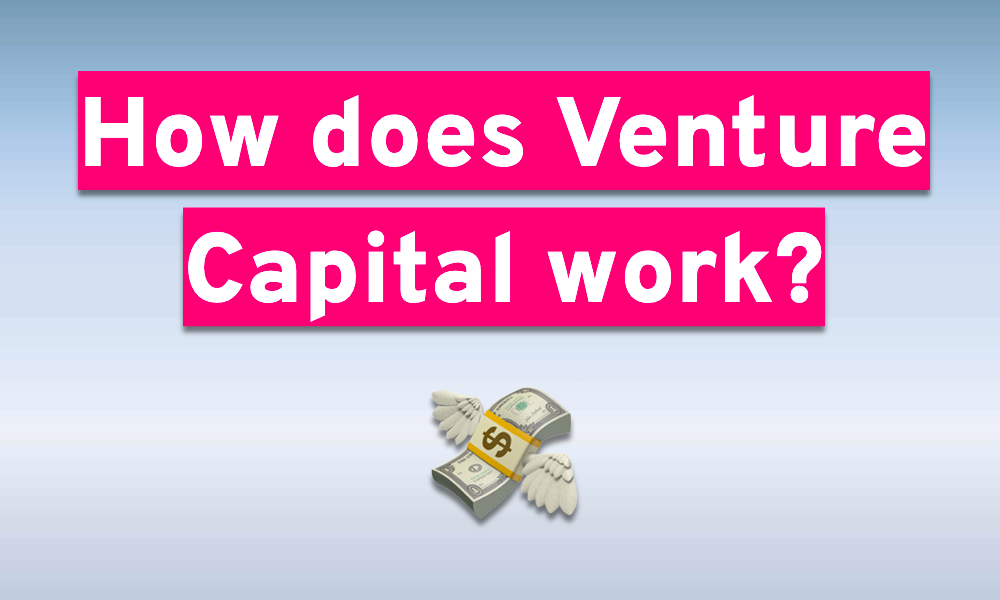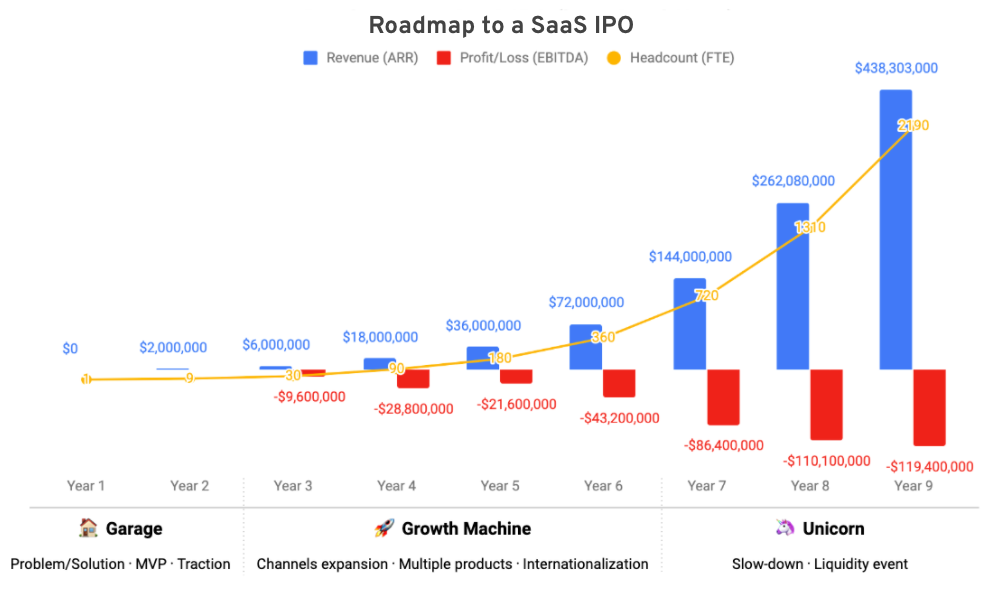As a founder who is going to be raising capital, it is essential to know what stage your company is in.
Nearly all startups at some point or another will require external funding. The company stage determines just who is going to be possibly interested in cutting a check. Each stage has its own metrics that various venture capitalists use to determine if the company is mature enough to grow and scale. (For more on how venture capital works, you can click here and cramp your cranium on the subject.)
“Raising venture capital is the easiest thing a startup founder is ever going to do.”
- Marc Andreessen
Understand that raising funding is just one portion of the founder journey, and the better you understand this portion, the easier it will be.
Let’s get to it!
Table of Contents
The Bootstrapping Stage
The bootstrapping stage is known as the pre-funding stage, or as the “I just started a company and need to tell everyone on social media about it” stage. Bootstrapping occurs when a business owner starts a company with little to no assets. Bootstrapping involves no external sources of funding and is so early that the company may be nothing more than a name and an idea.
Bootstrapping requirements
As this is the earliest stage of the company, there are no real requirements as no external investors will be involved yet. You may even postpone incorporating the company since you usually don't have substantial sales or intellectual property.
For most startups, bootstrapping is a temporary state until they raise a first round of external funding. Building up a solid founding team, a minimum viable product (MVP), and gathering insights from potential users are typical objectives of the bootstrapping phase.
Bootstrapping investors
By definition, there's no investor when bootstrapping.
Any funds at this stage come from the founders, relying on their own personal resources. Sources of funding at this stage include:
-
Personal debt (founders put expenses on their personal credit cards).
- Utilizing savings from personal bank accounts (checking and savings accounts that were once meant for paying bills are now a source of capital for the startup).
- Any other sources of personal funds (time to cash in that Bar Mitzvah savings bond the founder may have received twenty years ago).
It is not uncommon for the founding team to be working their day jobs in order to fund their startup. Some founders may be driving Uber while others may be doing consulting work on the side. It doesn’t matter so long as there is a source of capital that can be used to fund the business. In some cases, the company may be generating revenue and the entirety of this revenue is used to grow the company (an example would be pre-orders of a product and then using the funds received to fulfill those orders).
Bootstrapping valuations
Again, since there's no external investor at this stage, there's usually no valuation until the startup raises a pre-seed or a seed round.
However, a few startups manage to avoid any funding rounds and proceed to eventually have an exit, allowing the founders to retain full ownership and have a major payday. Here are some examples:
- Sara Blakely launched Spanx with $5,000 of her savings (even filing the patent herself to save on expenses and purchasing the trademark with her credit card). In 2021, Spanx was valued at $1.2 billion.
- Ben Chestnut and Dan Kurzius bootstrapped Mailchimp to a $12 billion exit when they sold it to Intuit, becoming the largest bootstrapped exit ever.
- Nick Woodman used his personal savings and a $35,000 loan from his mother to launch Woodman Labs, which later became GoPro. He bootstrapped the company until Foxconn invested $200 million. GoPro later went public at a $2.96 billion valuation.
It's worth noting that the advent of cloud, no-code, and online distribution have lowered the startup costs to an extent that founders increasingly maximize the time they spent bootstrapping in order to skip one or two rounds of funding, therefore retaining more equity in the company.
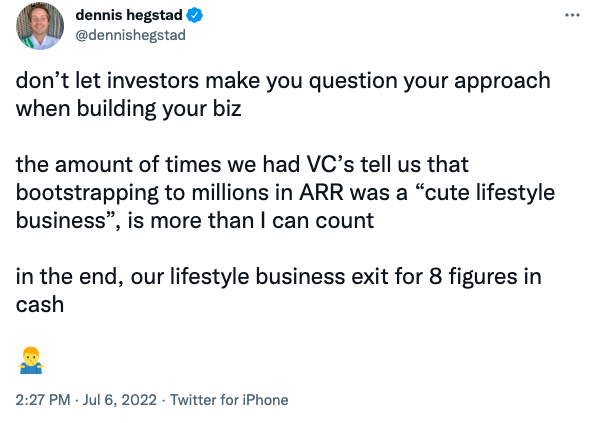
Not every company can bootstrap their way to success, though. In fact, most don’t. External investors are often needed to scale, grow, and hopefully have an exit. This brings us to the pre-seed stage.
Unlock the secrets to startup fundraising 🚀
Use our FREE, expert-backed playbook to define your valuation, build VC connections, and secure capital faster.
Access now
Pre-seed round / Angel round
Full post on pre-seed available here.
What does pre-seed mean?
The pre-seed stage is also referred to as the Angel round stage or as the “hey mom and dad, this is the opportunity to get in on the ground floor of my company stage (A.K.A. the friends and family round)”. This is the earliest stage of a startup seeking external funding and any funds raised usually come from the founders themselves as well as the "3F (friends, families, and fools) and angel investors.
Startups at this stage are still building the product, ideating the concept, determining the product-market fit, and often have a limited user base. All legal documentations, patents, trademarks, and partnership agreements should also be created in this stage (if they haven’t been done at the bootstrap stage). Essentially, the pre-seed stage is the idea funding stage.
Once you have raised your pre-seed round, you're engaged in a race to get to product-market fit and raise the next round (the Seed round) before you run out of money.
Pre-seed requirements
What determines if a pre-seed startup can successfully raise a round of funding? A sound idea, an MVP (minimum viable product), a great and experienced founding team, and early signs of traction and the potential for revenue. As this is the riskiest stage of a company, the founding team is the center of any investor valuation. It is far easier to raise a pre-seed round if the founders were successful in their last entrepreneurial venture.
“If we made the right decision, we’re going to invest in every company they start.”
- Ron Conway, Silicon Valley super angel
Pre-seed investors
Few people are willing to gamble significant amounts of money on an idea without a track record or existing customer base. It is an extremely risky endeavor for any investor, whether it be angel or VC, as the idea may never mature into an actual product that is released into the market.
So, who is investing in this round?
- The founders themselves
- Family (including your weird Uncle)
- Friends (you helped move a couch, now you’re calling in a favor)
- Fools who don’t understand the product but want to be involved
- Select angel investors
- Select VCs who consider pre-seed stage startups. These are often micro-VCs
- Crowdfunding platforms
- Incubators and accelerators
- Some VC scouts
It should also be noted that the top founders can afford to be picky about whom they want on their cap table and will prefer strategic investors that bring added value. After all, your weird uncle may have a large bank account but may not be able to offer sound business advice or tactical connections that could make a difference. Plus, the quality of the people on your pre-seed cap table will be a factor for future investors when raising your next round (seed).
Pre-seed valuations
At this stage, the valuation of the company can be all over the place. It is not uncommon to see pre-seed valuations between $500k-$5 million. Founders need to understand that even though it may be a billion dollar idea in their mind, the reality of fundraising as a pre-seed company takes priority.
During this fundraising stage, it isn’t uncommon for founders to take in small checks. While many often require a minimum ticket size, Elizabeth Yin (co-founder of Hustle Fund ) wrote a thread on micro-checks from micro-angels and why founders should consider it. Check it out.
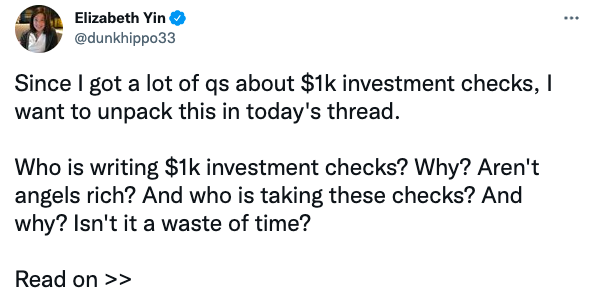
Funds raised during the pre-seed round average between $100k-$1 million (depending on whom you ask, this could vary wildly). Because valuing a business at this stage is difficult, founders often use SAFE notes. SAFE stands for Simple Agreement for Future Equity. A SAFE note is a promise to allow an investor to purchase a specified number of shares for an agreed-upon price at some point in the future and after specific milestones are hit. Simply put, SAFE note allows the founders to postpone the valuation of the company to the next round.
These funds are often used for hiring a team, getting an office up and running, setting up the infrastructure, building the business model, marketing and market testing, research, and importantly, preparing for the product launch. Pre-seed funding is often needed more for companies with a high startup cost.
How to raise pre-seed
It should also be noted that the pre-seed round has no set time limit. It may happen quickly or could drag out for months. It depends on the founders, their personal experiences and professional networks, as well as the nature of the company. This is largely due to the fact that pre-seed often comes from non-professional investors who don’t have a time horizon for the exit.
You should anticipate 12-18 months as a timeframe for fundraising for the pre-seed round. As the pre-seed round is often raised via SAFE Notes, there is no need to raise all the money at once. Smart founders can and should utilize Paul Graham’s high-resolution fundraising.
It should be noted that founders who continue to do additional rounds of funding face the risk of diluting themselves further and further. SAFE notes are dangerous for unsophisticated founders who don’t understand how they work and continue to raise carelessly. As a founder, it is important to know when to stop as well.
Seed stage - From PMF to revenue
Full post on seed available here.
What does seed mean?
So, you raised enough money from your friends and family to hire a team, demonstrated that your startup is viable, and now you have some early metrics to prove it. Welcome to the seed stage, where it is hoped that the capital invested (the seed) grows into a mighty tree.
The seed stage is often referred to as the first official fundraising stage. Like the pre-seed round, investors may include friends, family, and angels. However, venture capitalists are a viable option as they are more willing to engage in this round. In fact, some of the biggest VC firms have dedicated seed funds. This includes big names like Khosla Ventures, Greylock, and Andreessen Horowitz.Seed requirements
At the seed stage, the company should not only have their minimum viable product (in beta with actual users, leave the alpha and prototype to the bootstrap and pre-seed stages), but should have also clearly demonstrated that it works and that there is a demand for it. There is revenue, traction, signs of increasing growth (signups, user registration, demand from vendors and/or enterprise clients), and the team and key personnel are in place. More importantly, the startup should have a compelling argument on why they are the solution to the problem that they are attempting to solve.
The most important factor to raise a successful seed is a proven product-market fit (PMF). Brian Balfour has written a great piece on PMF, which is defined by 3 factors: strong user or revenue growth, high retention, and meaningful usage of the product by the users.

Seed investors
Once deemed too early or too risky, seed stage companies are in vogue. Khosla was a seed stage investor in GitLab, InstaCart, DoorDash, and QuantumScape while Andreessen Horowitz made seed investments into Stripe, Lime, and Robinhood.
But why do investors want to get in at the seed sage of a startup?
Simple.
The lead investor of a seed round is usually the first to get a board seat. It allows them to have an influence and a vote in paramount decisions at an early stage of the company. Seed investors may also. get pro-rata rights, which gives them the right to invest in the next round or rounds next to the new investors. If your company is successful, this is a valuable option for investors who like to "double down" on the winners.
Seed valuations
The valuation of a seed stage startup varies. As of 2019, seed valuations of U.S. based startups range from anywhere from $4-11 million with check sizes varying between $50,000 to $5 million.
How to raise a seed round
Seed investors look closely at the quality of the team and the product. On top of that they start to look at basic metrics:
-
Retention, which is a function of the churn rate
- Monthly revenue, which can be calculated as MRR (for SaaS), GMV (for ecommerce, marketplaces), GTV (for fintech), etc.
-
Growth rate, which is both user growth and revenue growth. A monthly growth rate of 20% is
- Burn rate and runway: How much money you burn each month and how long you can last with $X raised
Smaller seed rounds are typically raised via SAFE notes (like a pre-seed round) while larger seed rounds are classic priced round (like a Series A).
Although there is no set time limit, the seed round should take up to 6 months to complete and raise funds.
Steven Fitzsimmons has a great article on how they raised their seed round during Covid for Freshpaint. Check it out.

Unlock the secrets to startup fundraising 🚀
Use our FREE, expert-backed playbook to define your valuation, build VC connections, and secure capital faster.
Access now
Series A - From revenue to growth machine
What does Series A mean?
The seed has been planted and has started to grow. You have a product, a brand, a loyal customer base, and significant monthly revenue with a potential to expand tenfold…no, a hundredfold! This is the time to scale up but significant investment is required. Welcome to the big leagues. Welcome to the Series A stage. No longer are you bound to friends and family for capital. Series A is strictly for venture capital firms and super angels (sorry grandma, you missed your chance).
At earlier stages, one of the most common phrases that founders hear from investors is that the company is too early for them. There isn’t enough metrics, traction, customers, or revenue to justify an investment. This phrase tends to evaporate as startups reach the Series A round.
Series A requirements
Series A funding requires a Series A valuation. The startup has to be properly valued and priced. To reach this valuation, the startup will be scrutinized more than ever before. Analysts will examine the company metrics, size, track record, management, risk and most importantly, the potential for growth. Here is a sample chart for an Enterprise SaaS to help you determine your metrics at this stage. A big thank you to Alda Dennis at Initialized for this.
Series A investors
Series A investors include some of the top venture capital firms in the world. This includes Lightspeed, First Round Capital, Sequoia, Andreessen Horowitz, Accel Partners, Bessemer Venture Partners, Benchmark Capital, and many others.
Series A valuations
Typical valuations at this stage vary between $10 million to $30 million and the median check size is around the $10 million mark. Investors at this stage expect a significant return on their investment. Funds are used for additional hiring, scaling up the business, purchasing equipment and inventory, as well as other long-term business goals.
How to raise Series A
When you reach Series A, you're dealing with professional investors only. The round is a priced round, the terms become more technical and sophisticated. The metrics become a key part of the analysis - get familiar with acronyms like ACV, LTV, CAC, etc.
Some founders still raise Series A themselves while others outsource that task to professional fundraising advisors. It still takes 6 months on average to raise your round.
Series B / late stage - From growth to exit
Your startup has grown into a real company with a higher valuation to prove it! Your story and idea have been validated. Hitting milestones was so last year and now you are exceeding them. Revenue is being generated and your friends and family who missed out on the pre-seed opportunity are now asking if you are hiring. More importantly, you have survived the doubt, setbacks, burn rate, loss of your social life, constant investor pressures, market conditions, and still have a huge potential for growth. Congratulations, you have arrived at the Series B/late stage of your entrepreneurial journey.
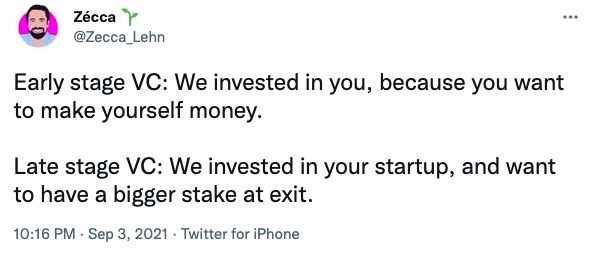
What does Series B / late stage mean?
The Series B/late stage is for mature companies who are looking to raise additional funds to reach the next level and meet the demands of a growing customer base. The purpose of raising capital at this late stage is to expand into new markets, develop new products, and even acquire other companies. Current and prospective investors can review metrics and determine how the management team has performed. At this stage, the investment risk is much lower than at previous stages of the company. As a result, any investors that come in at the Series B/late stage pay a much higher share price.
Series B / late stage requirements
Investors at this stage of the fundraising process want a strong company that is not only widely known and established, but has a strong operating history. Companies that qualify for Series B/later stages have stable revenue, a positive future outlook, profit, a solid customer base, and most importantly, room to grow and expand further.
Series B / late stage investors
Series B/late stage funding comes from late stage VC funds, investment banks, hedge funds, and private equity firms. Sometimes it may be the same investors who originally invested in the Series A round. At this stage, the risk for investors is much lower than at earlier stages of the company. In fact, the company may not even be referred to as a startup as the company is established. The Series B/late stage is the last stop in the fundraising journey and this is often the pre-IPO fundraising round.
Series B / late stage valuations
Series B/late stage companies have hundreds of employees with valuations that could be in the hundreds of millions to over a billion. The valuation at the Series B/late stage not only takes into account the future possible performance, but current company performance as well. For example, Vanta raised a $110 million Series B round at a valuation of $1.6 billion while Mutiny raised a $50 million Series B at a $600 million valuation (a big thanks to Top Startups for the latest valuation and funding). An example of a recent Series C investment is fintech company Trade Republic (Europe’s first commission-free mobile broker). Trade Republic raised a $900 million Series C at a $5.3 billion valuation. The funds will be used to expand throughout Europe.
How to raise Series B or late-stage rounds
When you're at this stage, you don't ask yourself this question anymore. The CEO has a CFO, legal counsels, bankers, advisors to help with the process and set up these more complex financing rounds, which may now include some level of debt as well.
Concluding Thoughts
Knowing the stages of startup funding and where your startup lands is crucial for the future of your endeavor. Each stage has distinct differences and requirements. Each stage has different demands and challenges and only the most intelligent and persevering teams will make it to a Series A and beyond.
It is important to note that close to 60% of companies that reach pre-series A funding fail to make it to their Series A round. The success rate is only 30%-40% . Furthermore, about 65% Series A startups manage to make it to Series B. About 35% of the companies that reach a Series A fail so it is important for founders to always keep focused on building the best possible business. After all, the ultimate goal for the founder is to have a liquidity event in the form of an acquisition or IPO. Here is a chart courtesy of Failory to keep it all in check.
Just remember that whether it's your second cousin or the biggest firm in Silicon Valley making an investment into your startup, they essentially want the same thing. They want to see your startup succeed and you become rich in the process, because they want to cash out as well (especially your cousin).
Find ideal VCs for your startup today 🚀








